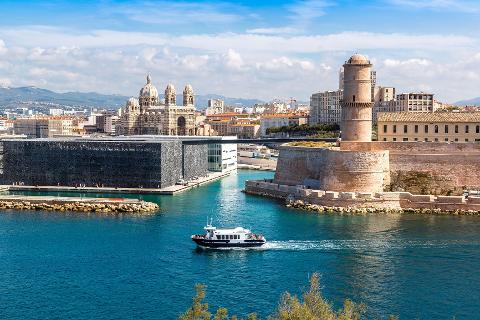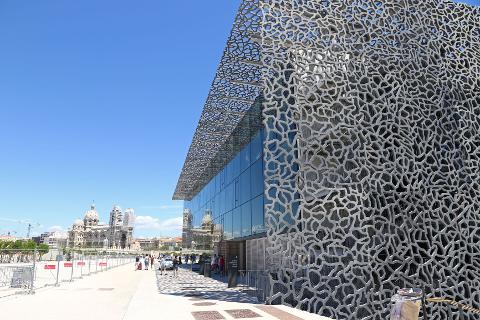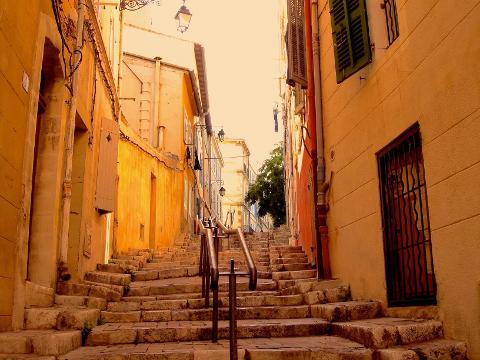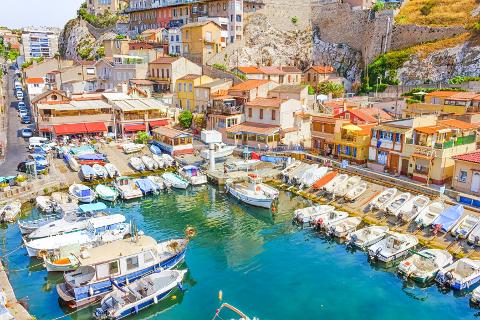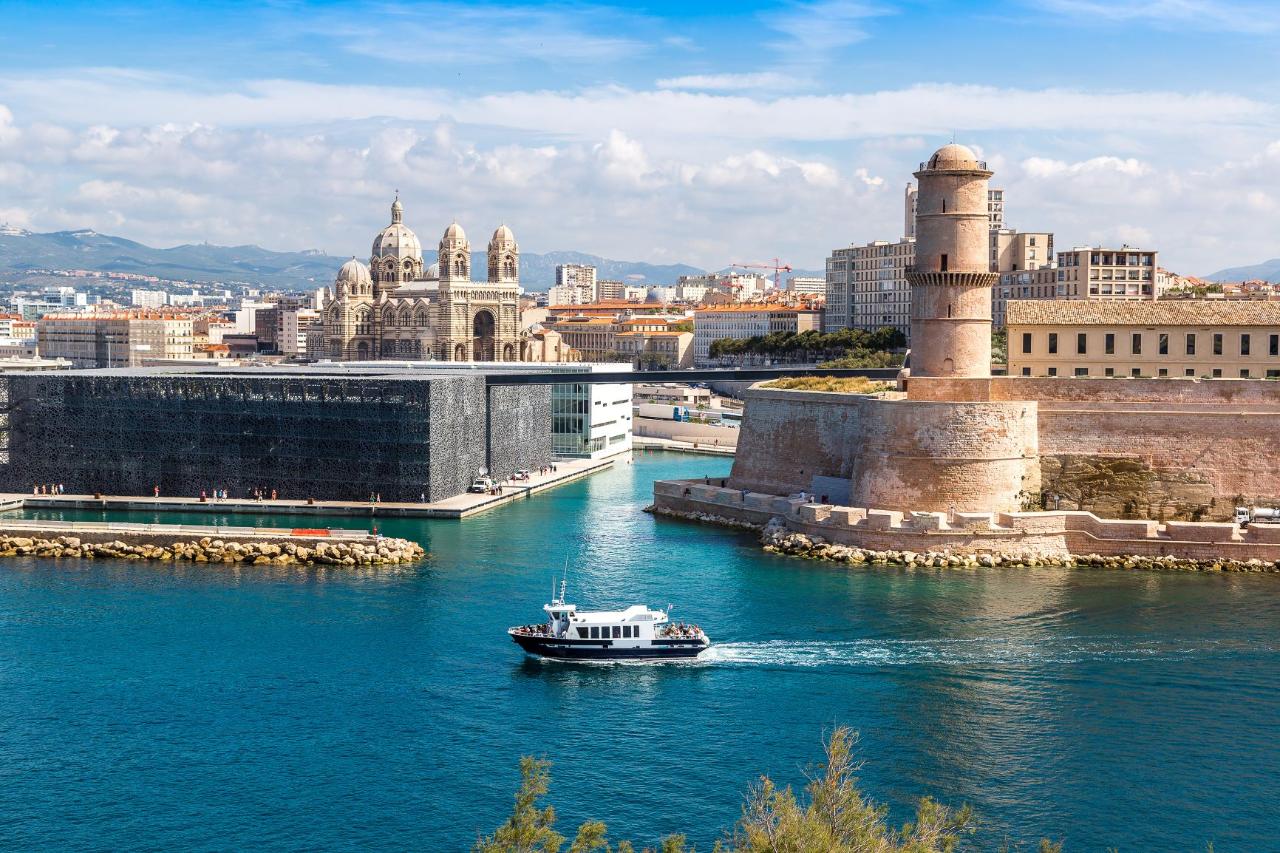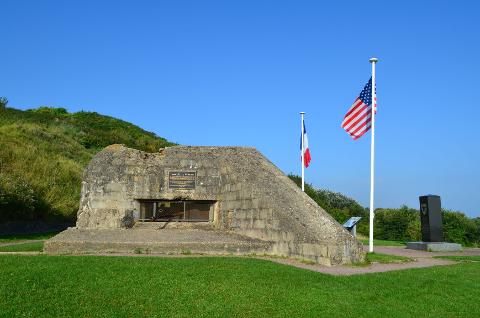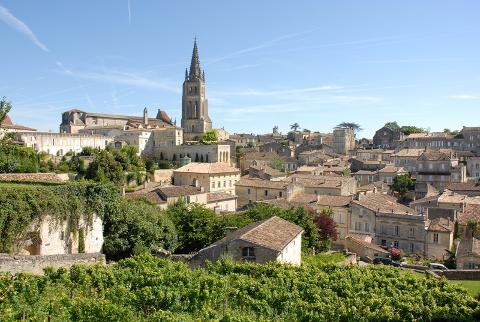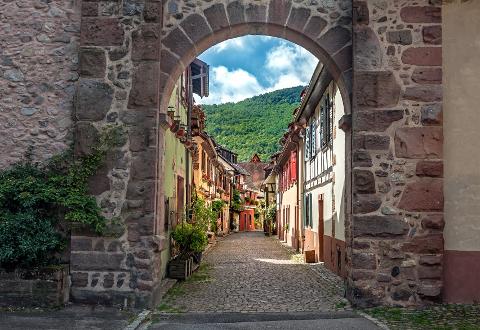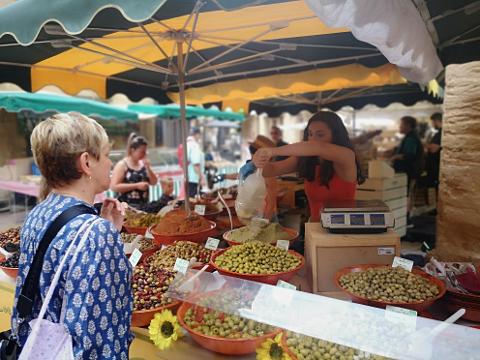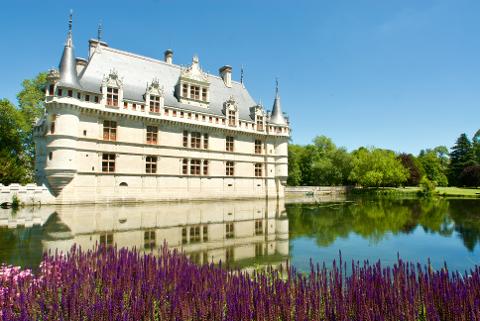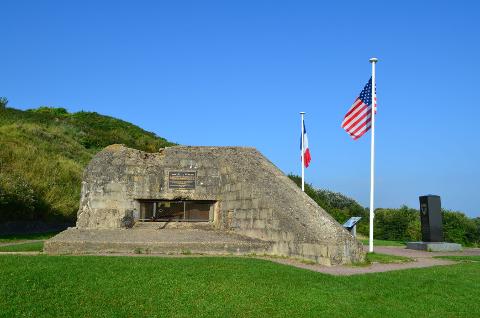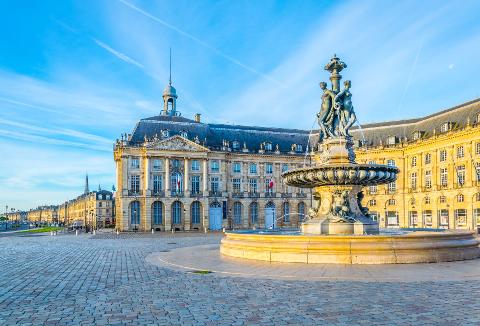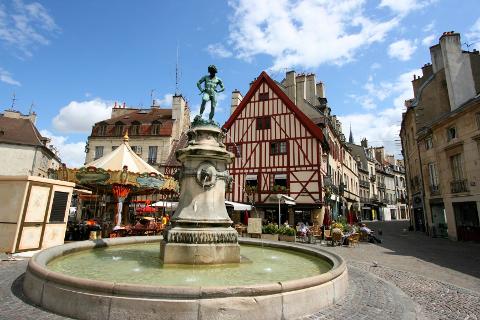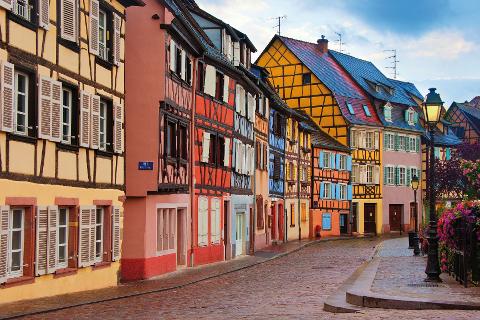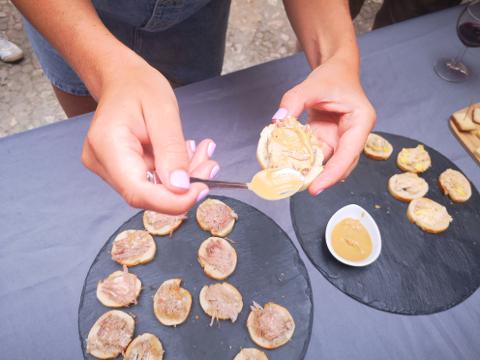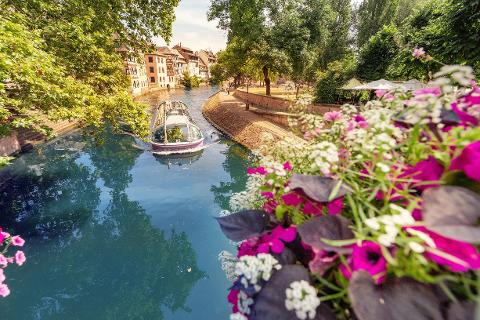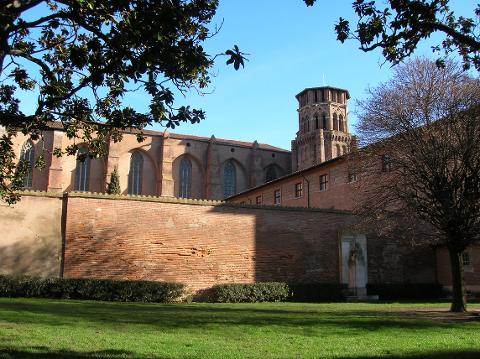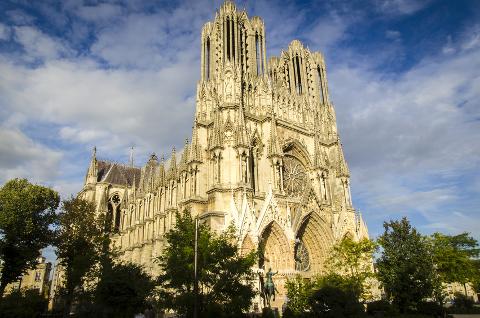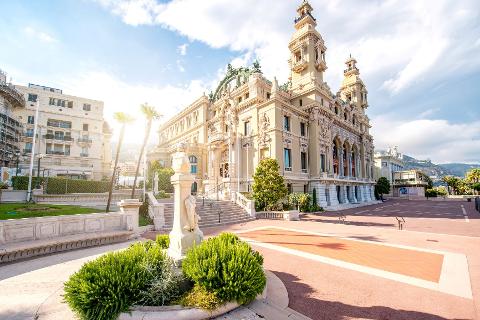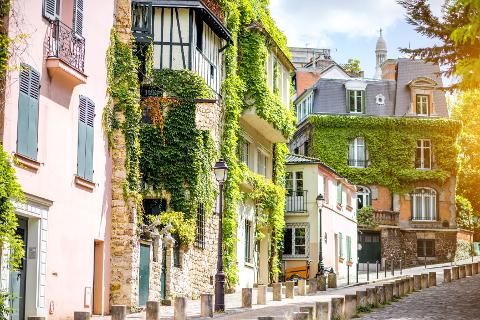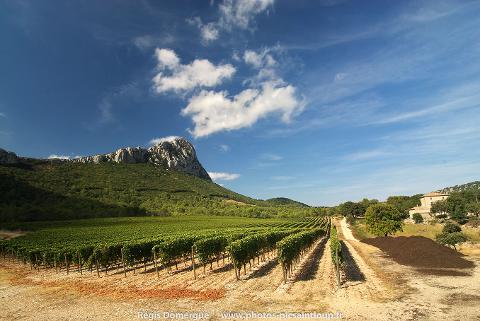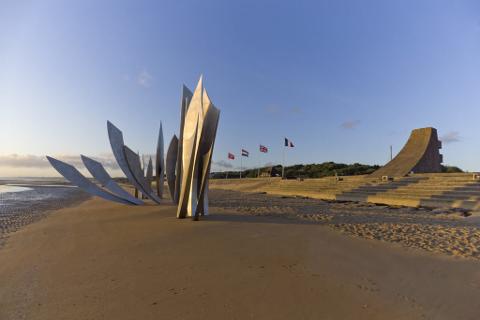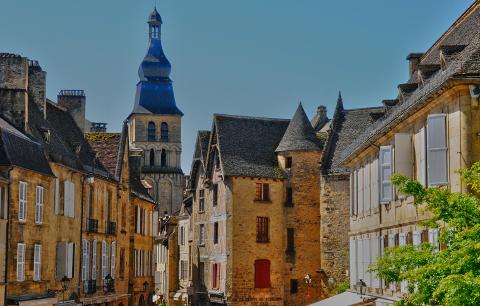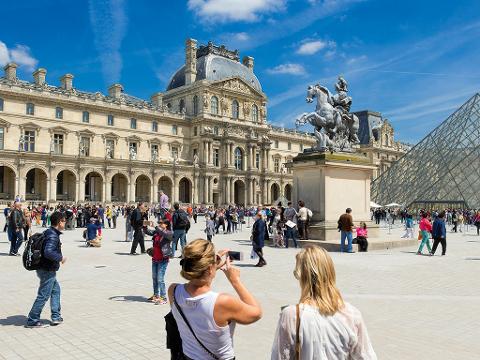Discover the best of Marseille with a private guide. This walking guided tour will allow you to discover one of the oldest districts of the Phocean City. You will have the opportunity to walk along the Old Port, where you will gain a better understanding of why Marseille was a strategic place for the Greeks to build a city. You will see the Old Charity, a former hospital for the poorest people.
You will walk in front of the Cathedral La Major, which will surprise you with its uncommon Byzantine architecture designed by Esperandieu. Let’s not forget the MUCEM, which contrasts with the old architecture of the rest of the district. The Musée des Civilisations d’Europe et de Méditerranée offers numerous permanent or temporary exhibitions (entrance tickets are not included). Admire both Fort St Jean and Fort St Nicolas which stood proudly at the entrance of the Old Port.
Meet your English speaking licensed tour guide
Your English speaking local guide will come and pick you up at your centrally located hotel or accommodation in central Marseille. If you are coming from out of town, it will be possible for us to organize a dedicated meeting point in Marseille such as in front of the Marseille tourism office.
The Old Port
The Vieux Port represents the birthplace of Marseilles. This is where the city began as a Greek port around 600 BC. Surrounded by serene blue waters, the Old Port is located in the west of Marseille near the Canebière boulevard.
The Old port of Marseille was completely renovated in 2013 and the district is without a doubt the heart of the City. The whole area became semi-pedestrianised as part of a big redevelopment project designed by the British architect Norman Foster to open up the space for bars and restaurants, vendors and public events.
This is where all the major events of Marseille take place and where the crowds meet when they celebrate their football team’s achievements. In the morning, one should not miss the very lively fish market.
The Panier District
Your guided tour continues in the Panier district, which is another area that one should not miss when visiting Marseille. This popular neighborhood is topped by the Old Charity and is composed of small but steep streets, crossed by multiple stairways and lined with elevated buildings and their colorful façades. Here, spend time to stroll through the narrow streets and reach Moulin’s square where numerous art galleries, restaurants, cafés and designer boutiques have settled.
The 'Vieille Charité' hospital
In accordance with the royal policy of “the great confinement of the poor”, in 1640 the City Council decided to “confine Marseille’s native poor to a clean and specific place.” In 1670, a charity within the Magistrate Council commissioned Pierre Puget, the Marseille-born king’s architect, to build a General Hospital to accommodate beggars and the poor. The first stone was laid in 1671 of what would be one of Pierre Puget’s most beautiful architectural designs.
The hospital was completed in 1749 with four wings of buildings enclosed on the outside and opened by a 3 floor corridor on an internal rectangular courtyard to access the vast communal work and residential spaces separating men and women. The chapel built in the centre of the courtyard between 1679 and 1707 is a stunning architectural piece with an ovoid dome, the epitome of Italian baroque. The current façade wasn’t built until 1863 and echoes the Charité’s mission.
The Mucem Museum
Built on the historical site of the Fort St-Jean, Marseille’s most recent cultural offering bridges the gap between the city and the sea. The Museum of European and Mediterranean Civilisations (MuCEM) opened its doors in June 2013 while Marseille was European Capital of Culture.
The building was designed by architect Rudy Riciotti and it was the first museum entirely dedicated to Mediterranean culture, which has played such a major role in European and in African history. Resolutely contemporary, the architecture combines raw materials and shapes that play with the light and shadow of the south of France. It is listed among the world’s 50 most visited museums.
The Cantini Museum
This museum visit can be a great option if you would like to enhance your guided walking tour of Marseille. Art lovers will appreciate the superb collection of modern and contemporary art displayed within a 17th-century hôtel particulier (mansion). The local art collector Jules Cantini bought this elegant house in 1888, and he bequeathed it to the city of Marseilles in 1916.
The Musée Cantini boasts one of the country's most extensive assortments of modern art created between 1900 and 1960. Highlights of the collection include works by Raoul Dufy, Wassily Kandinsky, Max Ernst, Joan Miró, and Pablo Picasso.
Your local guide is flexible, so if you wish to see some other highlights of the City such as the Corniche or the Football stadium then you will need to inform your guide who will adapt the tour to your requirements as long as the timing is not an issue. If you would like to visit Notre Dame de la Garde, please let us know as we will need to adapt your itinerary and program accordingly.
Photo Gallery
